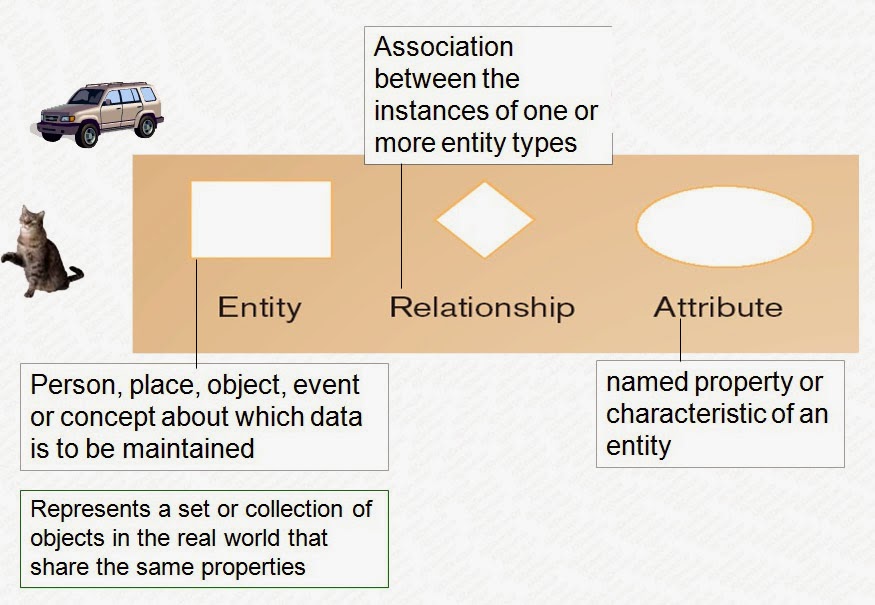We are developing the Project 'Survey Builder', and here we develop the Entity Relationship Model or in short ER Model of Survey Builder.
But the question is What is an Entity-Relationship Model, ER Modeling is a top down approach to database design, it is a detailed, logical representation of entities associations and data elements for an organization or business.
Notation used for ER Modeling:
For designing the ER Modeling, a special notation or symbols are used. These notations are:
- Data entities
- Relationships
- Attributes

Examples of entities:
–Person: EMPLOYEE, STUDENT, PATIENT
–Place: STORE, WAREHOUSE
–Object: MACHINE, PRODUCT, CAR
–Event: SALE,REGISTRATION, RENEWAL
–Concept: ACCOUNT, COURSE
Guidelines for naming and
defining entity types:
–An entity type name is a singular noun
–An entity type should be descriptive and specific
–An entity name should be concise
–Event entity types should be named for the result of the event,
not the activity or process of the event.
STUDENT: Student_ID, Student_Name, Home_Address, Phone_Number, Major
Guidelines
for naming attributes:
–An attribute name is a noun.
–An attribute name should be
unique
–To make an attribute name unique
and clear, each attribute name should follow a standard format
–Similar attributes of different
entity types should use similar but distinguishing names.
Candidate key
–Attribute (or combination of attributes) that uniquely
identifies each instance of an entity type
–Some entities may have more than one candidate key
•Ex: A candidate key for EMPLOYEE is Employee_ID, a second is the combination of Employee_Name and Address.
•If there is more than one candidate key, need to make a choice.
Identifier
–A candidate key that has been selected as the unique
identifying characteristic for an entity type
In above diagram an entity named Staff that have four Attribute, where StaffID is the Candidate key or Primary key.

How to Evaluate a Data Model
A good data model has the following:
–Accuracy and completeness
–Non redundancy
–Enforcement of business rules
–Data Re-usability
–Stability and Flexibility
–Communication Effectiveness
–Simplicity


No comments:
Post a Comment